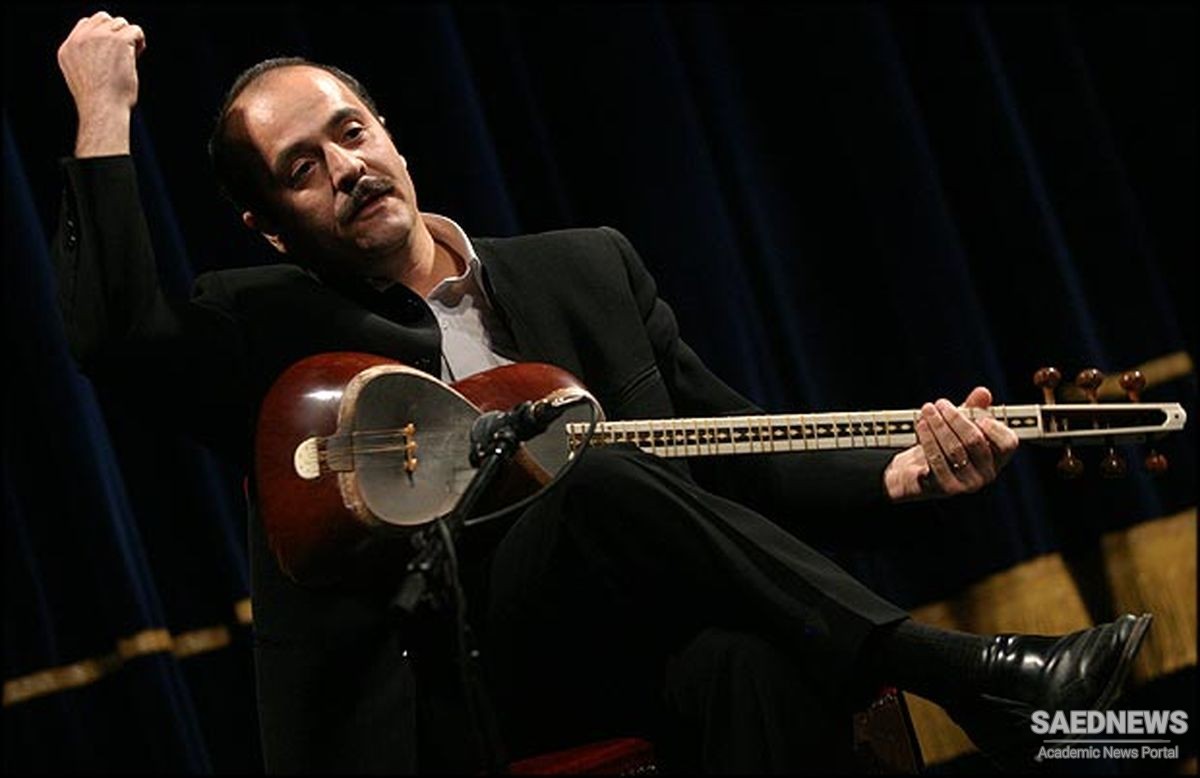This characteristic of Mahur might well be attributed to its scale, which is, in essence, the same as the piagai form of the Western major, a scale generally felt to express brighter emotions. The name Mahur even seems close to "major," although its meaning, "rising ground," is not related.
Like Shur, Mahur is one of the more popular dastgah-ha in use today. For this reason, there are several acceptable versions of the basic melody. The one.presented in Examples 42-45 is the most widely recognized melody. It starts on the ist, here c", descends to the dominant and then rises to the supertonic, often continuing to the upper dominant before descending to the ist. That both the dominant and supertonic are important scale degrees is demonstrated by the expanded version of the daramad, Example 44. The note of stress, shahed, is debated among theorists. Some claim the tonic, others the dominant. In either case, the strength of a V-I relationship is significant.
All sources concur on the gusheh-ha of Mahur. Most important is the melody on the dominant called Delkash (fascinating, winsome), which is a particularly clear example of the kind of modulation that occurs in Persian music. This gusheh adds two accidentals : a koron on the sixth degree and a flat on the seventh : CDEFGA f B b C. The tetrachord of Delkash is thus identical to that of the most popular Persian melody type, Shur. A listener who had not heard the opening of a performance of Mahur might think that Delkash was, in fact, Shur. But the melodic contour of this melody and its eventual return to the tonic of Mahur would indicate that it was Delkash.
Another gusheh of Mahur, .also on the fifth scale degree, is Shekasteh (broken, or doleful). On the upper tonic are the two gusheh of Araq and Rak. The rast kuk for Mahur is C for tar and sehtar, F for santur, and G for violin.


 Persian Classic Music: The Dastgah Shur
Persian Classic Music: The Dastgah Shur














































